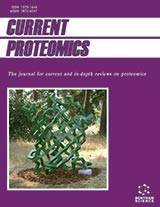Abstract
The prediction of eukaryotic exons is an important topic in bioinformatics. In this paper, a model-independent method based on the singularity detection (SD) algorithm and the three-base periodicity has been developed for predicting exons in DNA sequences of eukaryotes. Using the HMR195 data set, BG570 data set and 200 test data as test sets, we show that, (1) In comparison with the exon prediction by nucleotide distribution (EPND), modified Gabor-wavelet transform (MGWT) and fast Fourier transform plus empirical mode decomposition (FFTEMD) method, the proposed SD method notably improves prediction accuracy of exons, especially short exons or the ability to discern two contiguous short exons disunited by a short intron; (2) The SD method also significantly enhances the performance of the noise suppression in exon prediction over all assessed model-independent methods. The performance of the SD method is evaluated in terms of the signal-to-noise, the approximate correlation, the area under the receiver operating characteristic curve and the accuracy against those of the EPND, MGWT and FFTEMD method over HMR195 data set, BG570 data set and 200 test data. Experimental results demonstrate that the SD method outperforms all assessed model-independent methods with respect to those performance parameters.
Keywords: Bioinformatics, eukaryote, exon, model-independent method, singularity detection, three-base periodicity.
Current Bioinformatics
Title:Prediction of Eukaryotic Exons via the Singularity Detection Algorithm
Volume: 9 Issue: 4
Author(s): Jiaxiang Zhao, Xiaolei Zhang and Wei Xu
Affiliation:
Keywords: Bioinformatics, eukaryote, exon, model-independent method, singularity detection, three-base periodicity.
Abstract: The prediction of eukaryotic exons is an important topic in bioinformatics. In this paper, a model-independent method based on the singularity detection (SD) algorithm and the three-base periodicity has been developed for predicting exons in DNA sequences of eukaryotes. Using the HMR195 data set, BG570 data set and 200 test data as test sets, we show that, (1) In comparison with the exon prediction by nucleotide distribution (EPND), modified Gabor-wavelet transform (MGWT) and fast Fourier transform plus empirical mode decomposition (FFTEMD) method, the proposed SD method notably improves prediction accuracy of exons, especially short exons or the ability to discern two contiguous short exons disunited by a short intron; (2) The SD method also significantly enhances the performance of the noise suppression in exon prediction over all assessed model-independent methods. The performance of the SD method is evaluated in terms of the signal-to-noise, the approximate correlation, the area under the receiver operating characteristic curve and the accuracy against those of the EPND, MGWT and FFTEMD method over HMR195 data set, BG570 data set and 200 test data. Experimental results demonstrate that the SD method outperforms all assessed model-independent methods with respect to those performance parameters.
Export Options
About this article
Cite this article as:
Zhao Jiaxiang, Zhang Xiaolei and Xu Wei, Prediction of Eukaryotic Exons via the Singularity Detection Algorithm, Current Bioinformatics 2014; 9 (4) . https://dx.doi.org/10.2174/1574893609666140702184225
| DOI https://dx.doi.org/10.2174/1574893609666140702184225 |
Print ISSN 1574-8936 |
| Publisher Name Bentham Science Publisher |
Online ISSN 2212-392X |
 26
26
- Author Guidelines
- Bentham Author Support Services (BASS)
- Graphical Abstracts
- Fabricating and Stating False Information
- Research Misconduct
- Post Publication Discussions and Corrections
- Publishing Ethics and Rectitude
- Increase Visibility of Your Article
- Archiving Policies
- Peer Review Workflow
- Order Your Article Before Print
- Promote Your Article
- Manuscript Transfer Facility
- Editorial Policies
- Allegations from Whistleblowers

















.jpeg)








